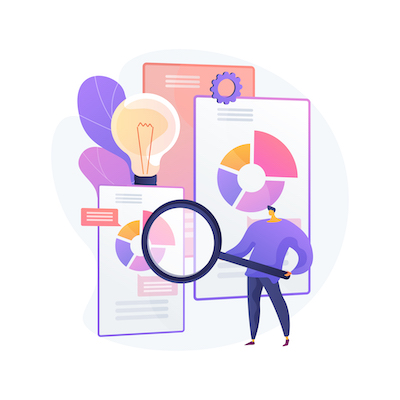Automation
The economizing nature of automation has been well-documented for decades. But surprisingly many business leaders still rely on their teams completing specifically data-oriented tasks in a manual, non-automated manner. This summary walks you through why data automation is a constructive idea for any organization that works with data.

Why Automation?

The value of automation is in time savings and reallocation of resources. Every hour a member of your team spends working with data manually is an hour that they could be spending on higher-value projects if what they were stuck working on is automated. Surveys with industry leaders such as the one described in this article show that employees tend to lose many productive hours a week to inefficient data practices.
Furthermore, automating data tasks that would otherwise be completed manually reduces the number of workers and other resources your organization will need to add in the future to keep up with these tasks; in that sense, automation is the way to go in terms of scalability. So if you are interested in optimizing the efficiency and productivity of your team ―and who isn’t― then automation is the name of your game.
Automation For Data Flows
In this day and age, organizations often rely on numerous different technology platforms to store their data. These platforms could include CRMs like Salesforce, HubSpot, Zoho, and others; workforce and HR systems like Workday and BambooHR; database management systems like PostgreSQL/PgAdmin, Snowflake, MySQL, MongoDB, and others; and of course, Excel!
Oftentimes, when data is inserted or updated on any one of these systems, a similar insertion/update has to occur elsewhere to keep all of the systems’ data in sync. It is much easier to keep up with this syncing if flows of data from one system to the next are automated rather than manual.

Automation ensures that whoever is responsible for keeping the systems in sync does not waste time having to perform the same data entry in multiple systems. Another benefit of automation for data flows is improved data accuracy; only having to edit data in one place instead of many minimizes “fat-fingering”-type manual data errors. These benefits make data flows a great place to start when it comes to automation.
Data professionals write computer programs to automate the completion of data tasks. Python ―now the world’s most-used programming language― is a common choice, as it is an intuitive language that interacts well with different systems and formats. Using a programming language, the professional writes a script to:
1 Connect to the system he or she wants to keep in sync using a tool called an Application Programming Interface (API),
2 Pull the data they need from the origin system using that API,
3 Make any necessary alterations to that data
4 Complete the required changes in other systems using the destination system(s)’ API(s)
This script is then set up to run automatically on a predetermined schedule without any need for human intervention to ensure that all systems are staying up to date at a reasonable frequency.
Case Study – Large Nonprofit
What do automated data flows look like when implemented effectively in the real world? Boxplot recently completed a project on behalf of a large, national non-profit that assists students in under-resourced schools with their summer reading, in which we did exactly that.

The list of teachers who work for this nonprofit is constantly changing. As a result, it is easy for the multiple systems in which the nonprofit stores the teachers’ data to fall out of date and/or fall out of sync with each other. Originally, the management of all of this data was manual. It required three full time employees. There were also many human errors, which is impossible to avoid with manual data entry. Our solution was to automate these data flows, eliminating the need for three full time employees to work on manual data entry. The script we built completes the following tasks automatically:
- Connects to their project management tool via its API and collects data on which teachers are new and need to be created in other systems, as well as which teachers need to be deactivated in other systems
- Validates each teacher’s data stored in this system to make sure it is conducive to automatic sync with other systems
- Connects to their CRM via its API and collects and validates data about the same teachers identified in step 1. Those teachers’ records are then either updated or inserted accordingly in the CRM.
- Creates email addresses using their email provider’s API for teachers who need to be set up
- Connects to an eBook reading tool using SFTP via Python and updates/inserts teachers’ records as needed.
- Deactivates teachers in these systems if the teacher leaves the nonprofit
- Sends a notification email to relevant employees to confirm that the script has run successfully and to list out the teachers that have been set up and/or deactivated with that run
Automation For Your Organization
Want to minimize the time your employees spend on manual data entry and other repetitive tasks? Want to reallocate your employees’ time to higher-value work? Worse yet, are you one of the ones stuck performing tedious tasks using technology all day? Automation mitigates all of these issues. If you are in need of assistance setting up automated data collection, data flows, report updating, and more using the latest technology, Boxplot is your go-to partner. Reach out to us and start streamlining your organization’s data today.


